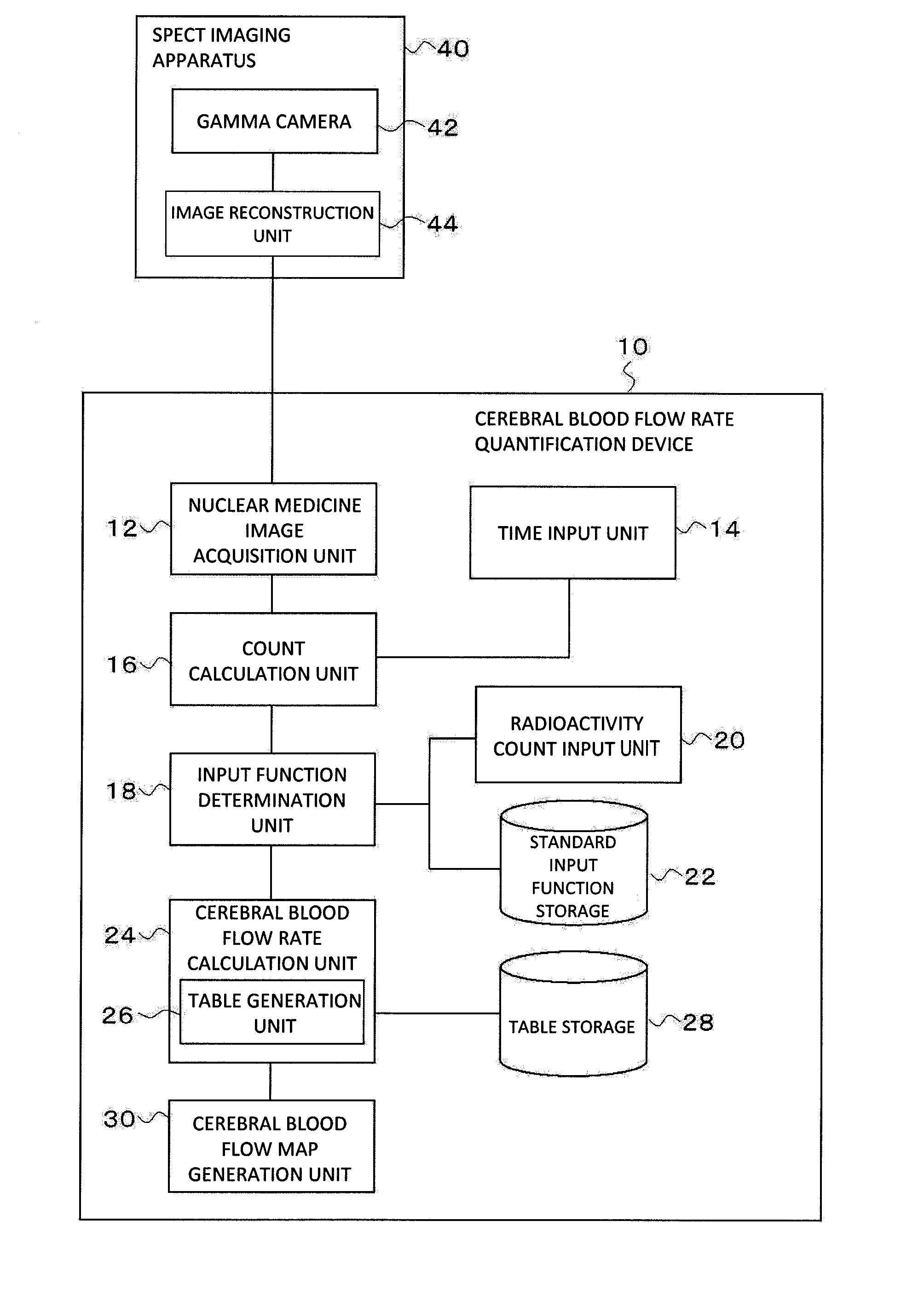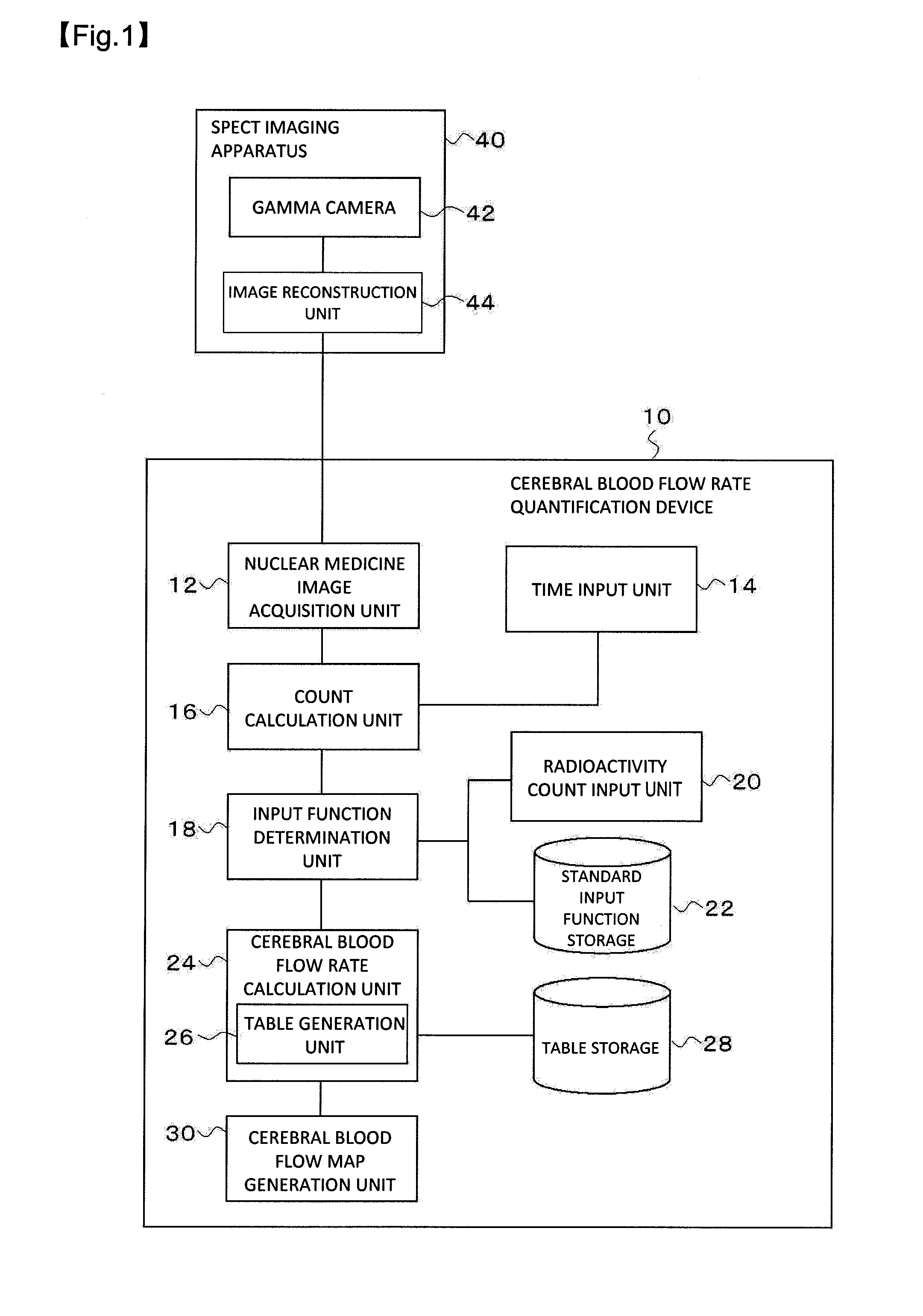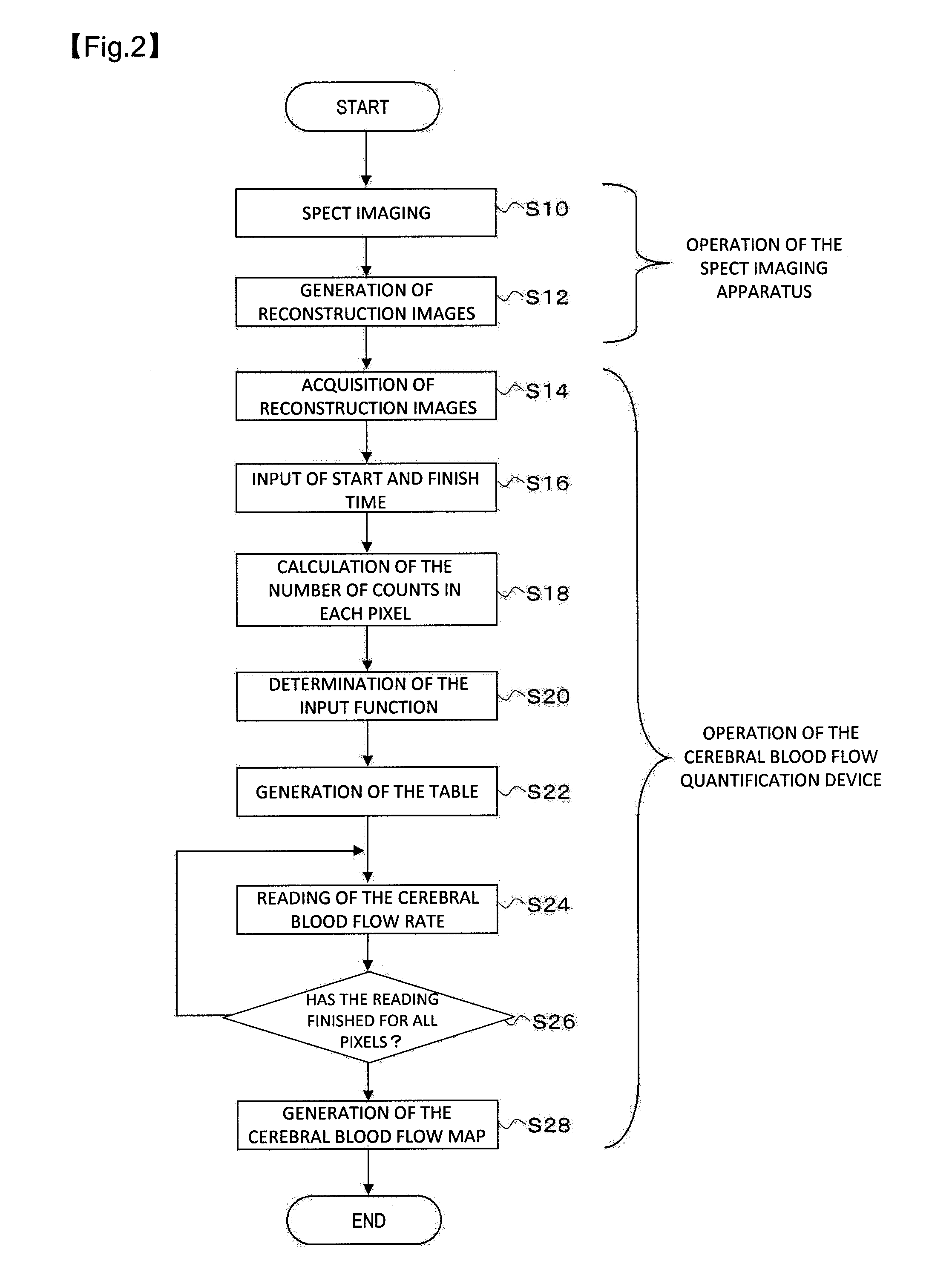Cerebral blood flow quantification device, cerebral blood flow quantification method and program
a blood flow and quantification method technology, applied in the field of cerebral blood flow quantification devices, cerebral blood flow quantification methods and programs, can solve the problems of reducing quantification accuracy, serious aftereffects, and disadvantages of being highly invasive, and achieve the effect of accurately quantifying the cerebral blood flow ra
- Summary
- Abstract
- Description
- Claims
- Application Information
AI Technical Summary
Benefits of technology
Problems solved by technology
Method used
Image
Examples
examples
[0061]Working examples and a comparative example will be shown below to describe the invention in further detail, but the invention is not limited to the following. In the working examples, regions of interest were set in reconstruction images, and the cerebral blood flow rate in the set regions of interest was quantified on the images by using reconstruction images imaged in the following time: (Example 1) 0-10 minutes; (Example 2) 10-20 minutes; (Example 3) 0-20 minutes; (Example 4) 15-35 minutes; and (Example 5) 15-25 minutes. As a comparative example, the cerebral blood flow rate in the regions of interest was quantified by a conventional method by using reconstruction images imaged in 15-35 minutes after administration of an agent.
[Collection of SPECT Data]
[0062]A subject was administered with 123I-IMP (200 MBq), and 14 successive scans of dynamic. SPECT data were collected at 2.5 minutes per scan.
[Correction of a Standard Input Function]
[0063]An input function was determined b...
examples 1 to 5
Calculation of the Cerebral Blood Flow Rate in the Working Examples
(Creation of Tables)
[0065]In the working examples according to the invention, the above-described equation (1) was used as the function expressing the concentration of the radiopharmaceutical. In Example 1, the first time t1 was 0 minute, the second time t2 was 10 minutes, and the left side was substituted with 1, in the equation (1); and then fitting was performed according to the Gauss-Newton algorism to calculate the value of k1. This operation was successively performed with the left side substituted with integers ranging from 2 to 1000, and Table 1 showing k1 versus an arbitrary number of counts was created.
[0066]The same operation as described above was performed: in Example 2 with the first time t1 being 10 minutes and the second time t2 being 20 minutes; in Example 3 with the first time t1 being 0 minute and the second time t2 being 20 minutes; in Example 4 with the first time t1 being 15 minutes and the seco...
PUM
 Login to View More
Login to View More Abstract
Description
Claims
Application Information
 Login to View More
Login to View More - R&D
- Intellectual Property
- Life Sciences
- Materials
- Tech Scout
- Unparalleled Data Quality
- Higher Quality Content
- 60% Fewer Hallucinations
Browse by: Latest US Patents, China's latest patents, Technical Efficacy Thesaurus, Application Domain, Technology Topic, Popular Technical Reports.
© 2025 PatSnap. All rights reserved.Legal|Privacy policy|Modern Slavery Act Transparency Statement|Sitemap|About US| Contact US: help@patsnap.com



